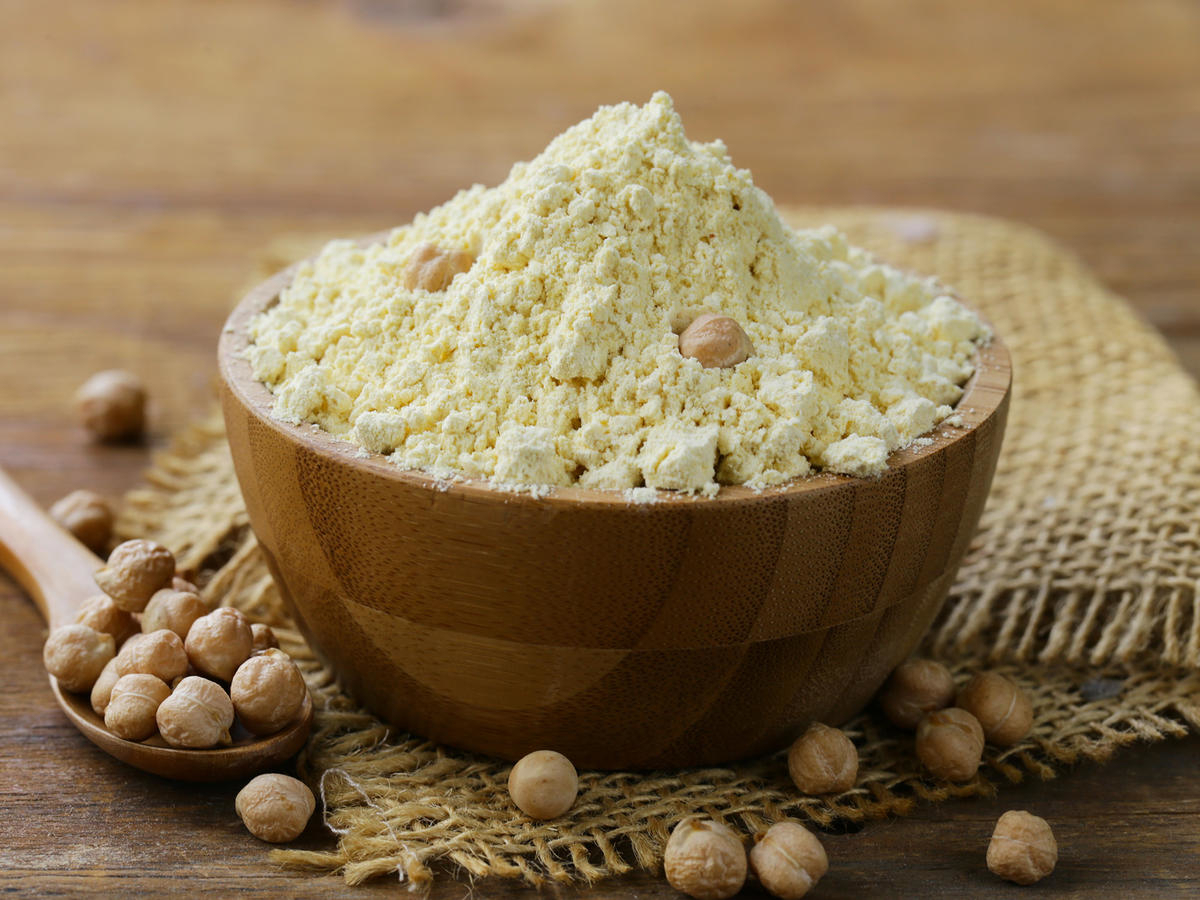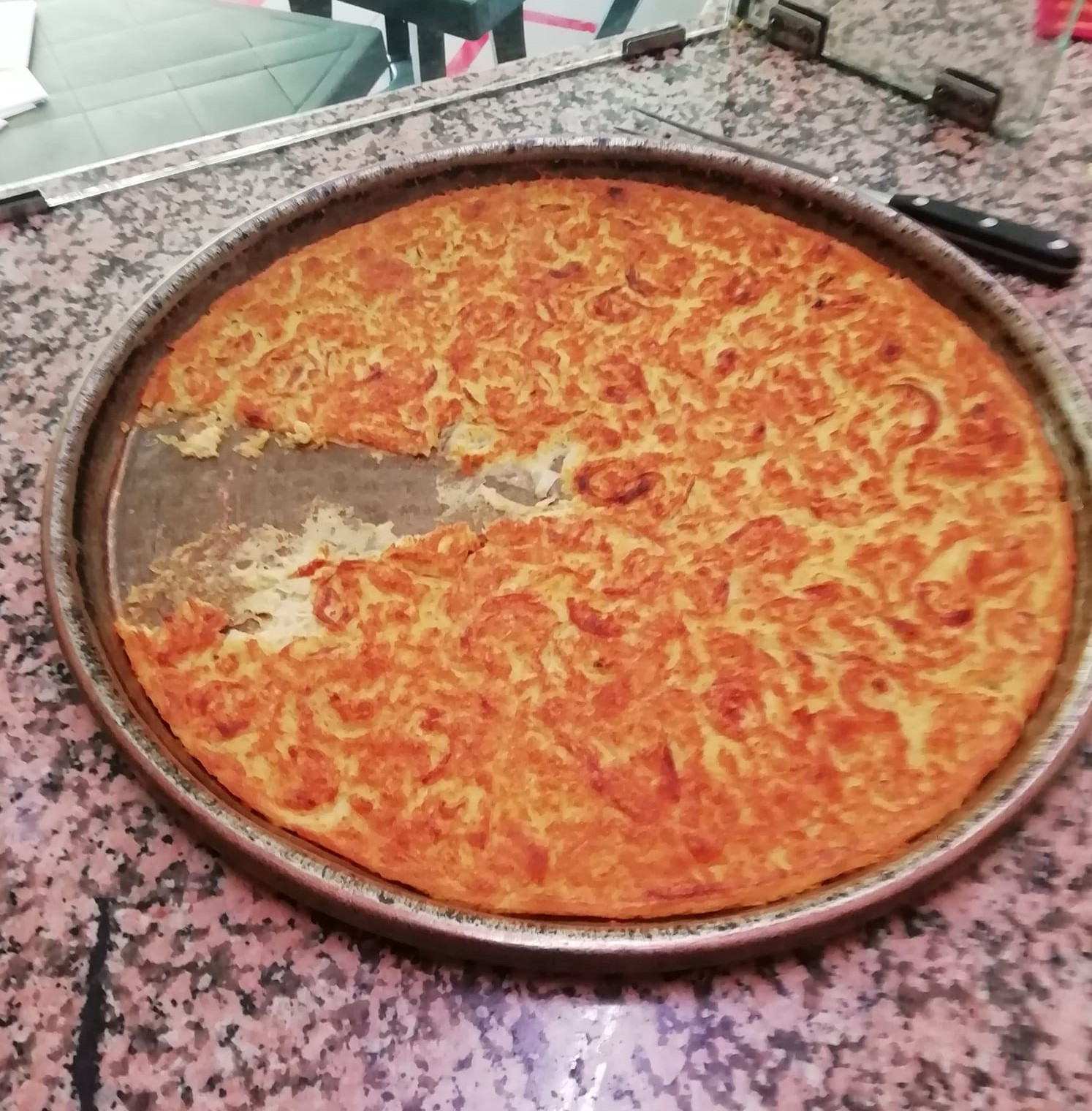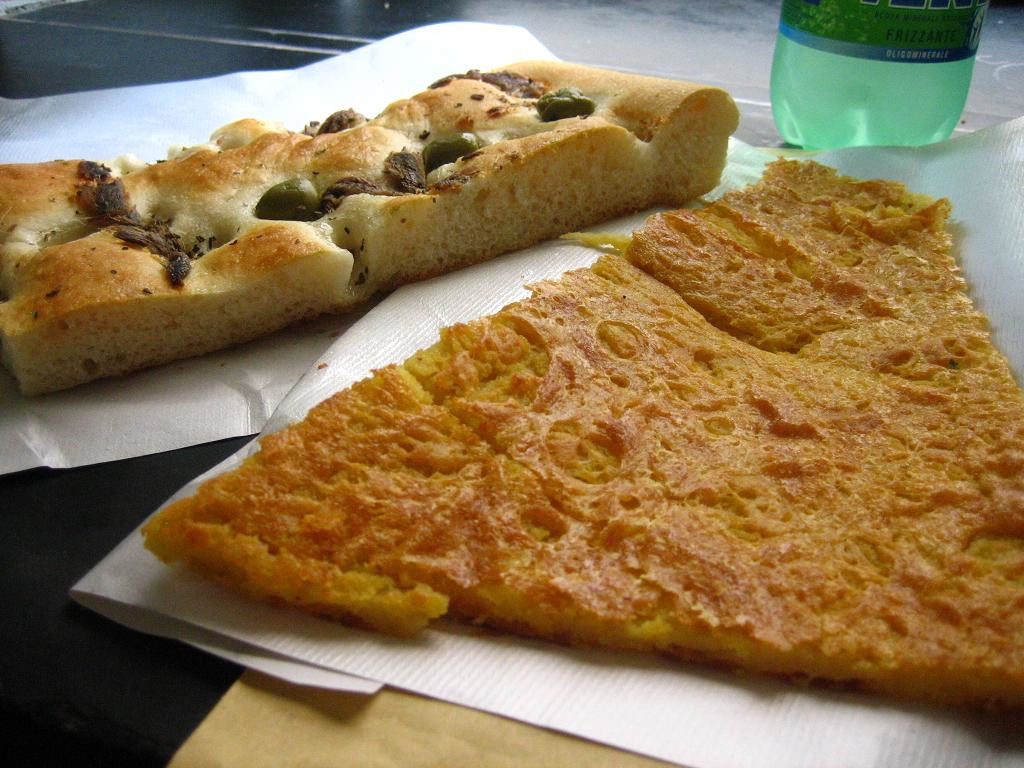Conocida como
farinata,
cecina,
5 e 5,
socca y otros nombres diferentes en función de la ciudad o de la región, la torta de garbanzos es una especialidad tradicional extendida por la costa occidental italiana, desde la Toscana hasta Francia y Niza. Dorada como el sol, crujiente (¡de 1 cm/menos de media pulgada de grosor como máximo!) y para que se te haga la boca agua, cuenta con una receta muy simple: masa sin levadura hecha a base de harina de garbanzo, aceite de oliva, agua y sal, que manos de expertos convierten en una verdadera felicidad para el paladar.
Los orígenes - Una historia de sol, batallas y marineros Según algunos historiadores, sus orígenes se remontan a épocas remotas, hasta los antiguos romanos. Los antiguos latinos no conocían las habas (introducidas en Europa desde América posteriormente), pero adoraban otras legumbres y hacían un uso extensivo de los garbanzos. Quizás fueron los primeros en preparar empanadas con puré de garbanzos, lentejas y/o habas, y podrían haber sido de los primeros en disfrutar todo su sabor.
Una famosa historia -probablemente una leyenda- atribuye la creación de la torta de garbanzos a una época posterior, en plena Edad Media, en la época de las Repúblicas Marítimas, cuando las relaciones comerciales con el mundo árabe habían difundido ampliamente el uso de los garbanzos en la Tradición culinaria italiana. Era el año 1284.
On August, the Battle of the Meloria marked the triumph of the Genoese fleet over the Pisan forces. The legend says that, on the way back home, the winners came across a violent storm that damaged a part of one galley’s cargo. The sea seeped through the hold with all its force and overturned some barrels of oil and chickpea flour. Everything was soaked with salt water and reduced to an unformed pulp.
The Genoeses, notoriously frugal, did not give up and did not consider - not even for a second - the option to throw the provisions away: they decided instead to nourish with them the Pisan hostages. Al principio, de hecho, solo unos pocos prisioneros podían lidiar con el terrible aspecto de la comida y la mayoría elegía lo rápido en su lugar, pero solo hasta el día siguiente. Al sufrir de punzadas de hambre, se debilitaban… ¡y el descubrimiento fue realmente extraordinario! Probablemente esta no sea una historia verídica, aunque se cree que es un recordatorio de una antigua lección: tal como suele suceder en la historia de la humanidad, las circunstancias de probabilidad y el caso producen un resultado espléndido. Horneado por el sol, el potaje se había convertido en una focaccia tentadora, una tan deliciosa que, una vez que tocaron tierra, los genoveses decidieron perfeccionar la receta y nombrarla “el oro de Pisa”, para burlarse de los enemigos derrotados. Donde sea y cuando sea que surgiera este manjar exquisito y auténtico, desde entonces ha pasado de generación en generación hasta el día de hoy.
 Mil y una "farinata": matices locales
Mil y una "farinata": matices localesA dish of the poor cuisine, made of simple, cheap ingredients, but sensational for its taste and smell, the chickpea flatbread has hundred different versions and names: “cecina” in Pisa, “5 e 5” in Livorno, “fainè” in Sardinia, “socca” in Nice and in Piemonte, “calentita” in Gibilterra…you could continue for days!
Thanks to the Ligurian emigrants, who in the early XX century settled in Latin America, it has become an essential part of
popular cooking even in Argentina and Uruguay, where is traditionally served also as a pizza topping and named “fainà”.
As it is, pure and simple, it is a delicacy, but several local traditions use to serve it into bread or accompanied by sweet onions and sausage, as in the case of the fainà, or by cream cheeses, as gorgonzola or stracchino, as it happens in Pisa.
The version created by the “tortai” (pie makers) in Livorno known as “5 e 5” (pronounced: chinquay ay chinquay) is no doubt one of the most famous and tempting versions: it takes its name from the popular habit, born in the first half of the past century, to order 5 Lira cents of bread, traditionally the French type, and 5 cents of chickpea pie, enriching the whole with marinated aubergines.
 Where to taste it? The magic of the first bite
Where to taste it? The magic of the first biteEven if there is plenty of recipes to make it at home, the estimators claim that the chickpea flatbread has to be eaten on the street, freshly baked, still steaming and super crispy, possibly with a fine
dusting of black pepper or inside a focaccia, in front of a traditional bakery or strolling in the vibrant atmosphere of a historical center or seafront.
In the Liguria region, where it is very popular, it is served in designated street fried food shops known in the local dialect as “sciamadde” (burst of flames). In the past century, these specialized bakeries faced hard times and many of them shut, but they are now living a new moment of glory, thanks to the popularity of street food and to the revival of traditional cooking. It is also sold in the so-called “farinaterie” in Genoa or in specific places; in Sardinia and elsewhere it is often found in take-away pizzerias. In Nice the “socca” is also proposed by peddlers, who use to cook it or keep it warm on a rack resembling the one used for crêpes, and across the whole Côte d’Azur local restaurants often proudly praise “Aquì, si mangia la socca” (here you can eat socca) in Nice Provençal dialect.
Traditionally, it is baked in
firewood ovens, within large tin copper pans called “testi”, up to 40cm (about 16 inches) large in diameter, in only ten minutes, at an average temperature of 300 degrees Celsius (almos 600° F).
Watching a baker at work, who’s firmly holding and almost embracing the large pan and swinging it with rapid, circular movements to create small waves and spread the oil before pouring the dough, is pure magic. The acts are so fleeting that they turn out to be almost unnoticeable and mesmerizing, brimful of the charm of ancient gestures and prelude to delicious promises.
 A shot of health!
A shot of health! Its fragrant and crispy taste, its essence as a yummy street food and its sunny color would satisfy even the most demanding palate and aesthete.
If this is still not enough, however, the chickpea flatbread is also super rich in benefits for health: full of proteins, fibres, minerals (such as iron and magnesium), vitamin B and E, it assures a high level of energy intake, helps the metabolism and actively contributes to keep glycemia and cholesterol levels under control.
Thus, really no reasons to resist: ready for the first mouthwatering bite?


